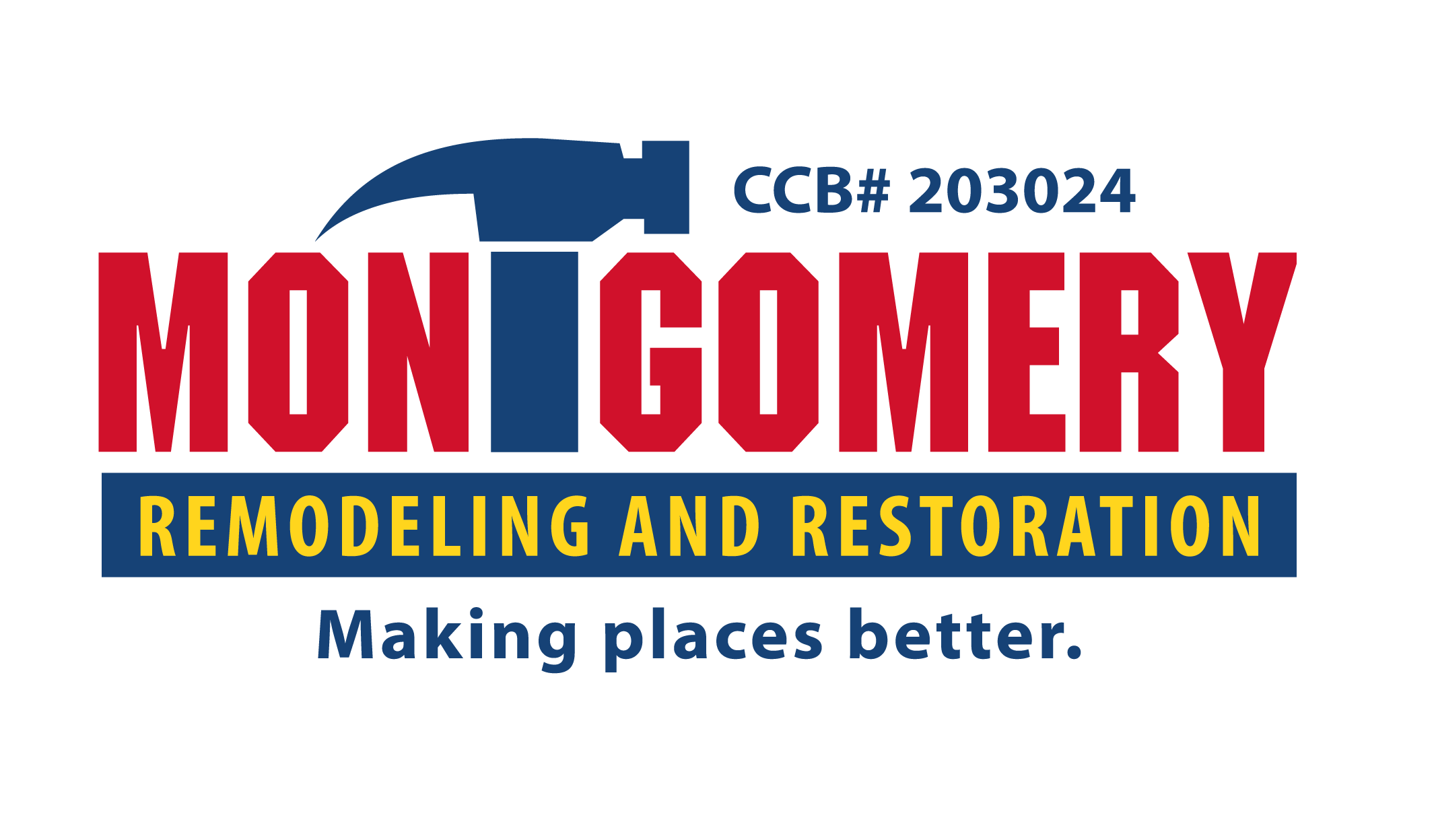
Tips for transitioning into Fall
As summer comes to an end, we look back at the many projects that Montgomery Remodeling and Restoration took on. With over 40 active jobs and just as many prospective projects on our list for fall, this summer has been one of our busiest yet.
We can attribute a majority of our work to the insane 2016/2017 winter that collapsed roofs, burst pipes, penetrated walls and floors and windows, (“oh my!”) and just about had everyone running for the equator by February. Seven months later and we are still getting calls about water and ice damaged homes that need repaired.
Meanwhile, we would like to thank all our sub-contractors and clients for a successful summer. While many contractors and construction companies have been extremely backlogged – with Oregon being one of the top over-booked states in the country – we were still able to push through the workloads and Make Places Better.
To ensure Better Places, we have a few tips for preparing your home for fall and the colder weather to come. September is a season of transition. From the early days of a holiday weekend and school starting quickly after, to the later days where we may notice the beginnings of a chill in the air, September can seem overwhelming. You never know what the next season will look like, so this information is designed to help you prepare your home for another potential strong winter.
1. Check doors and windows – First, once it starts to cool down, remove the AC units from your windows or properly cover them if they are permanently attached. Then, make sure all your windows and doors are working correctly. Fix any cracks in the glass that may have occurred or any locks that no longer latch. Most importantly, make sure your windows and doors close securely and no air can leak in or out. You can check for air leaks on a windy day or with an incense stick. Place the lit incense near the window and if the smoke trail is going any direction but up, you may have an air leak.
Make sure that all your windows are properly insulated before winter comes. If you are concerned about cold air coming through, look into DIY window insulation kits such as plastic, film or even bubble wrap. Caulking window seals is always an option, and even heavy vinyl curtains can be great for keeping out the cold.
Drafts can occur along the edges and especially at the bottom of doors. To secure any air leaks in doors, purchase weather stripping or draft stoppers for this issue. There are a lot of great DIY draft stopper options, even including rolling a towel and placing it at the bottom of the door. If possible, look into purchasing a storm door. There is a lot of evidence that suggests this simple addition can help save a lot of energy and money in terms of keeping your home warm.
2. Replace foundation vents – When the air gets colder in the winter, the vents in your foundation can really effect the cold that will get in. Plugging those vents with foam blocks is the simplest way to reduce the chance of cold air getting under your house and freezing pipes.
Remember to first check for any damaged screens in those vents and if you do find a hole, check for any critters that may have decided to make their home under yours! You may need to hire a professional to repair damaged ducts and insulation under your home caused by these unwanted house guests.
3. Run fans in reverse – Our ceiling fans can be one of the best ways to help cool down a home in the summer, but if you switch the rotation to clockwise, the fan can help circulate warm air from the ceiling down towards the living space. This is a great and cost effective way to keep warm air moving throughout your home.
4. Furnace maintenance – Similar to your car, furnaces can be tuned up to keep them running efficiently. Hire an HVAC company to inspect and service your furnace or even quote you for a new one. Old furnaces tend to be more costly and could be worth looking into a replacement or upgrade.
Another simple tip is to remember to replace your furnace filter after a hot and dusty summer. You may not have used your furnace very much, but those filters can still get dirty. Vents can also become dirty in between winters, so don’t forget to clean and inspect these as well.
Our last furnace tip is to research programmable thermostats. Often times, many of us forget to turn down our heat when we leave the house for an extended time or even when we sleep at night. For every degree you lower the thermostat, you’ll likely save 1-3 % on your heating bill!
5. Flush out water heaters – Sediment and mineral deposits can accumulate in your water heater overtime. Flushing out your water heater will help it to run more efficiently and can extend its life. This is a relatively easy chore to accomplish on your own and there are many guides and how-to’s on the web.
6. Insulate everything! – This one is a big topic and can cover a multitude of areas in your home. We’ve already talked about insulating your windows, but most important is to insulate your pipes. Cover your hose spigot with a foam covering and wrap up any outdoor pipes or hoses that you aren’t able to store for the winter. Drain any of these hoses and pipes first, have your sprinklers blown out, and if possible, turn off any water sources to exterior pipes.
In cases of extreme cold, any interior pipes that share an exterior wall of the house, should be protected from accidental freezing. Make note of which pipes and plumbing fixtures share these walls. These are the places you’ll want to add insulation to, if necessary.
For the insulation we currently have in our homes – such as in the attic, the walls and under the house – you’ll want to make sure none of these areas have any obvious damage. As mentioned previously, check for insulation under your house, and even in your attic, that looks mussed or tampered with. Replace damaged insulation, secure insulation closer to walls and flooring, and also straighten out the insulation in the attic. You’ll want it to be flat and not lumpy.
7. Chim chimney, chim chimney – If you have a traditional wood burning fireplace in your home, you’ll want to prepare it for winter as well. First make sure that any debris (or even animal nests!) are cleared from the opening. If you haven’t had your chimney cleaned in a while, you may want to hire a professional chimney sweep to clean out the area.
Ensure that the fireplace flue damper works and will open and close correctly. You will want to make sure no fire bricks or mortar joints have been damaged. If you notice any cracks or openings, get these replaced immediately. Damages and obstructions to your fireplace and chimney could be hazardous if not treated properly.
Remember that your chimney can cause a lot of heat to escape, and cold air to enter. If the flue damper in your chimney is broken, consider using something like a Chimney Balloon to help stop cold air from entering through. This can help to insulate your fireplace, saving you heat and money.
8. Declutter the roof – Roofs are EXTREMELY important when it comes to preparing for winter. You remember the last winter we had, right? Snow, freezing rain, snow, more snow, trace of snow, freezing rain, blizzard and did we mention snow? Yeah, that’s the one. Well a majority of the restoration work we did this year was on roofs, or on the damages caused by poorly maintained roofs. Ice dams are a real and severe threat to our homes when not treated properly.
To maintain your roof, first clear them of clutter. Remove pine cones, pine needles, juniper berries and other debris that not only have fallen on the roof, but have become stuck in your gutters. Gutters are just as important to clean and keep up with, as the items that stay in the gutters are a sure foundation for snow to stick too and form an ice dam later on.
Make sure that all the valleys are clean for water to run smoothly down and that your gutters are draining correctly. If needed, replace any broken shingles or even have your roof inspected for potential damages. Trust us, this will save you a lot of heartache (and money!) later on.
Fall is quickly approaching and winter is not far behind. Central Oregon doesn’t experience a “traditional” autumn like other parts of the state. Instead, we can easily go from 90 degrees and sunshine to freezing nights and frosty mornings. Really, this can happen in a matter of a couple days. Be on the lookout for freezing temperatures and use this guide to help you prepare for the cold. Stay on top of your home’s maintenance and always be prepared for any weather condition.
Montgomery Remodeling and Restoration can help with any of your upcoming fall and winter projects. Call us today to tell us about your newest project.



Alberto
Great article. Thanks